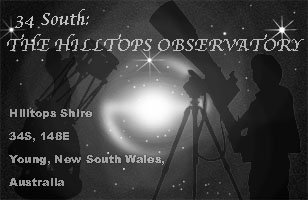When we were at the house on our return from Indiana (my last report), we found the UV treatment system in alarm indicating failure of the UV bulb. They typically last us about 12 to 18 months. So upon return home I ordered a replacement and on this trip I would install the new bulb. Upon removing the glass sleeve in which the bulb resides within the system housing, I cleaned it with CLR to remove sediment residue from the sleeve. I then removed the defective UV bulb from within the sleeve and inserted the replacement. The sleeve/bulb combo was then reinserted into the system housing, everything reconnected and the water turned back on to check for leaks. I then plugged the control unit back in and let it go through its power up sequence. Once that was done, the front panel displayed all green lights indicating the new bulb was up and radiating the water that passes through, killing any bacterial contaminants.
The last thing I did late in the afternoon was to bring in the cushions and various sundry items from our screened in back patio and store them in the garage for winter. Once that was done, my list of chores for this trip was complete! I could now set about focusing on the important stuff, a little rest, then out into the cooling air for a bit of galaxy hunting!
So with this in mind, after setting up my observing position, doing a quick collimation of the mirrors on the scope and aligning the unity and optical finders to the main view, I was ready to hit the sky road for about three hours. Last order of business was to power up the dew heaters for the finders as there was certainly a lot of moisture in the air – typical of this time of year. The sky was mostly clear, the Milky Way was a bit pale due to the soft transparency, but there were a lot of stars up there and I was aching for a real galaxy hunt! The air was cool at about 42° F (5.5° C), so I layered up a bit to ward off the chill for a while. Then off I went in search of those little denizens of the deep. I hope you will come along with me as I try to scrape a bit of fuzz from a dark rural sky.
(Equipment used)
17.5 inch
Ethos 13mm (152x, 0.7° TFOV, 2.9mm exit pupil)
XW 10mm (199x, 0.4° TFOV, 2.2mm exit pupil)
XW 7mm (283x, 0.2° TFOV, 1.6mm exit pupil)
Uranometria All-Sky Edition (+ red light)
Aiming the scope at mag 3.5 Mu Pegasi, I slipped southward about 5° to pick up a small backwards “L” of five stars (7th to 9th mag). Just north of this little
Just 11’ west of the previous object, I picked up this dim dust bunny. First glimpsed with 152x, it was very dim to the eye, presenting a fairly small homogeneous oval. It remained a very dim, smooth disk even at 199x and 283x, though a little more apparent. (New)
This dim galaxy is about 4.5’ east of
Shifting over to page 63 of the Uranometria, I now found my next object on the list. Easily spotted with 152x, it presented a dim, clearly elongated oval disk. Its appearance was diffuse and evenly illuminated. Also viewed at 199x and 283x I was now detecting some broad, but subtle, core brightness. (New)
Not quite half a degree west of the previous galaxy, I located my next object. Found using 152x, it presented a fairly dim, thick oval disk. Small and smoothly illuminated, though dim it was not particularly difficult. I was more apparent at both 199x and 283x, remaining homogeneous in appearance. This object is misidentified in various catalogues, even in my Sky Tools 4 software (by extension). In reality it equates to PGC 72200, when in fact it should be PGC 72216. It was discovered by Édouard Stephan in 1869. (New)
About 19.5’ SSW of
MCG 4-55-47 (Pegasus, spiral galaxy, mag=14.3, size=0.5’x0.3’, SBr=12.1):
Just 3’ northwest of the previous object this spiral was also picked up using 152x, but it was noticeably dimmer. It displayed a pretty small oval envelope that was smoothing illuminated. More obvious in the field at 199x, it now displayed a stellar core. Though easier still at 283x it remained a dim little bulb in the eyepiece. (New)
About 54’ west of the previous pair of galaxies I located my next three targets, within the field of the galaxy cluster Abell 2634. First up was this somewhat bright elliptical. At 152x it presented a small oval with a broadly brighter core region. Also viewed at 199x and 283x, it was very obvious within the field of view. William Herschel discovered this object in 1784, and also observed by his son John in 1828. (New)
Another member of Abell 2634, this elliptical was spotted using 152x, though it was fairly dim. It presented a small homogeneous rounded that remained weak, though easily seen with 199x and 283x. (New)
The third member of this galaxy cluster that I was able to pick up was this dim little dust bunny. Only suspected at 152x, it remained elusive even at 199x. However, it was confirmed at 283x as a very small and very dim oval disk that was evenly illuminated. (New)
South east of the AGC 2624 field I located a loose curve of three galaxies. The brightest of the lot was this barred spiral. Easily picked up using 152x, it revealed a somewhat large and somewhat bright thick oval envelope. I easily saw its central bar within the diffuse outer extremities. Viewed at 199x it was a bright and very obvious object, with the central bar dominating its disk. This was another 1784 discovery by William Herschel, and was a beautiful object indeed. (New)
Next up was this elliptical about 24’ WNW of the previous object. Small and dim at 152x, its disk appeared rounded in shape sitting between two dim (13th and 14th mag) field stars. It was more apparent at 199x though not a strong visual presence. Then at 283x an intermittent stellar core was glimpsed within its dim and small envelope. Missed by William Herschel, it was discovered in 1828 by his son John. (New)
Then about 15’ southeast of
Moving to the eastern side of Pegasus close to the Pisces border I easily located this dim and small object about 6.5’ east of a bright 9th mag field star. Using 152x it was obvious in the view as a homogeneous oval disk. Viewed with 199x it was an obvious little oval with an intermittent stellar core flicking in and out of view. Though it remained a little dim at 283x it remained easily seen in the field of view. (New)
Slipping almost 3.5° to the south, I located the bright 5.6 mag star 87 Pegasi. I then turned ENE nearly 1.5° to locate this spiral right next to the Pegasus-Pisces border. It was first spotted using 152x as a small and very thin dim elongated diffuse glow. Then at 199x I was getting a suspicion of some internal brightness that seemed to be more to the eastern half of the envelope. Then at 283x it was easy, and presented a very elongated disk, with the brighter eastern half being a little more obvious. Checking images after the session, it indeed looks like the western portion of its disk is of lower surface brightness than is the eastern part. This was an interesting object indeed. (New)
At this point since I was close to the Pisces border, I decided to move over into the celestial fishes to go after some new ones there to finish out my evening. The first one was nearby to where I had been in Pegasus, so that was my starting point. So slipping southward from
I found this object just a little over 1° SSE of the
Turning to chart 81 in Uranometria I now moved SSW to pick up mag 4.0 Omega Piscium. I located this spiral about 1.5° to the star’s east. Easily found with 152x, the galactic disk was small and just slightly dim. It exhibited a thick oval disk that had an obvious stellar core within. I noticed a mag 10.5 field star just to its northwest. This was a nice little object that stood out quite well. (New)
UGC 36 (Pisces, spiral galaxy, mag=13.6, size=1.3’x0.6’, SBr=13.2):
In the same field of view as
About half a degree northwest of
Sharing the field of view with
Picked up with 152x, this spiral presented as a small and dim oval disk with a stellar core in the center of its envelope. More apparent at both 199x and 283x, it nonetheless remained dim. (New)
This galaxy was a very dim and very small ghostly oval glow north of
This pair lay about 4’ ESE of
This object was picked up just over 6’ southeast of the Arp 246 pair, and the brightest of this grouping of galaxies. At 152x it was slightly dim and small; it was obvious in the field of view unlike its group-mates. It was very diffuse in appearance, and even at 199x it remained smoothly illuminated. (New)
About 3° SSW of the last grouping of galaxies I located a string of three, which would be my last objects for this evening. This lenticular at the western end of the three was the brightest of the lot. It presented as a small and slightly dim oval disk with a stellar core. Viewed with 199x and 283x it was more apparent and its stellar core obvious. (New)
Next in line was this barred spiral. Viewing with 152x it presented a small and dim slightly oval disk that exhibited a stellar core at its center. It was more apparent at 199x and 283x and while its visible disk remained a bit small and dim, its stellar core was obvious. (New)
The easternmost of the group was this barred lenticular. Seen at 152x it was very dim and small. Slightly oval in shape it had a diffuse ghostly appearance. Even at 199x and 283x it was rather weak visually. (New)
It was now around 2300 hours, the temp was getting a little cool at 39° F (3.9° C) and everything was getting very wet from the humidity in the air. My dew heaters were doing a fine job on the finders, but I was getting damp, tired and chilly. After the trip over, the work I did upon arrival, then setting up the observing site and dim galaxy hunting, I was ready to call it a night. While the sky was clear, it remained somewhat soft in appearance due to the humidity. So I packed it all back into the garage and headed inside to warm up and catch a little sleep before heading back home in the morning. Thanks for following along on this galaxy hunt and I look forward to seeing you all back out there just as soon as possible. Keep looking up!










